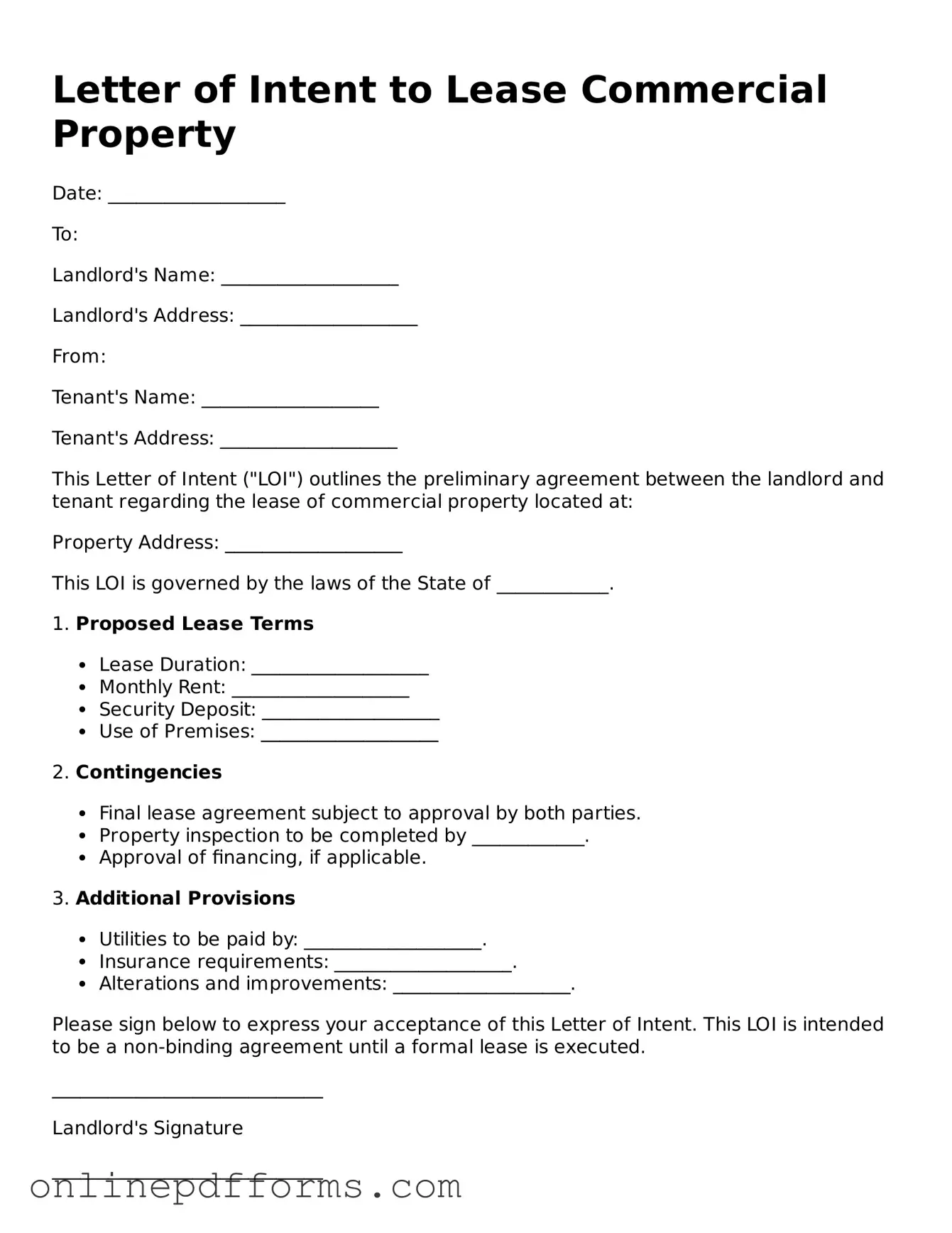The Letter of Intent (LOI) to Lease Commercial Property serves as a preliminary agreement outlining the basic terms and conditions of a lease. It resembles a Memorandum of Understanding (MOU), which also lays out the intentions of two parties. Like the LOI, an MOU is often non-binding and serves to clarify the main points of agreement before a formal contract is drafted. Both documents facilitate communication and ensure that all parties are on the same page regarding essential terms.
Another document similar to the LOI is the Term Sheet. A Term Sheet provides an outline of the main points of a deal, including the proposed lease terms, rental rates, and duration. While a Term Sheet is often used in various types of agreements, its purpose aligns closely with the LOI in that it serves as a summary of the key components that will be detailed in a formal lease agreement later on.
The Letter of Intent can also be compared to a Purchase Agreement, particularly in commercial real estate transactions. While a Purchase Agreement is a binding contract for the sale of property, it often includes similar preliminary discussions about price, terms, and conditions. The LOI sets the stage for these discussions, helping both parties understand their expectations before entering into a binding contract.
A Confidentiality Agreement, or Non-Disclosure Agreement (NDA), shares some similarities with the LOI, particularly in the context of protecting sensitive information. When discussing potential lease terms, parties may wish to keep certain details private. An NDA ensures that any shared information remains confidential, allowing for open discussions without the fear of public disclosure.
The Letter of Intent also aligns with a Letter of Interest (LOI). While both documents express interest in a property, a Letter of Interest is often less formal and may not outline specific terms. It serves as a way to gauge interest from the landlord or property owner, similar to how an LOI signals intent to negotiate a lease agreement.
Another related document is the Lease Proposal. This document typically includes detailed terms that the prospective tenant is willing to accept. While the LOI outlines the initial terms and conditions, the Lease Proposal expands on these points, providing more specificity and clarity, which can help facilitate negotiations.
The Letter of Intent (LOI) to Lease Commercial Property shares similarities with a Purchase Agreement. A Purchase Agreement outlines the terms and conditions under which property is bought, establishing the price and necessary contingencies. Like the LOI, it serves as a negotiation tool, setting the framework for the transaction. Both documents facilitate discussions by articulating the essential points of agreement between the parties, ensuring that everyone is on the same page as negotiations progress toward finalizing a deal. For those looking to invest, the https://pdftemplates.info/investment-letter-of-intent-form/ provides a structured approach to outlining initial terms.
Lastly, a Commitment Letter can be compared to the LOI, particularly in financing scenarios. A Commitment Letter outlines the lender’s agreement to provide financing based on specified terms. Similar to an LOI, it serves as a preliminary agreement that sets expectations and guides the drafting of a more formal contract, ensuring that both parties understand their obligations moving forward.
